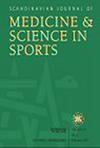Does Visual Training Enhance Athletes' Decision‐Making Skills and Sport‐Specific Performance? A Systematic Review and Meta‐Analysis
IF 3.8
2区 医学
Q1 SPORT SCIENCES
引用次数: 0
Abstract
This study aims to systematically evaluate the impact of visual training (VT) on athletes' decision‐making skills and sport‐specific performance, while assessing the moderating effects of participant‐ and training‐related factors. A systematic literature search was conducted across Web of Science, PubMed, MEDLINE, and SPORTDiscus, with the search limited to publications available as of January, 2025. Only randomized controlled trials with baseline and follow‐up measures were included if they examined the effects of VT on at least one measure of decision‐making skills and sport‐specific performance in healthy athletes. The search yielded 3435 articles, of which 27 studies involving 669 participants met the inclusion criteria for meta‐analysis. The results revealed that VT significantly improved decision‐making response time (SMD = 0.85; 95% CI = [0.45–1.24];视觉训练能提高运动员的决策能力和运动专项表现吗?一项系统评价和Meta分析
本研究旨在系统评估视觉训练(VT)对运动员决策技能和运动专项表现的影响,同时评估参与者和训练相关因素的调节作用。通过Web of Science、PubMed、MEDLINE和SPORTDiscus进行了系统的文献检索,检索限于截至2025年1月的出版物。只有具有基线和随访措施的随机对照试验被纳入,如果他们检查VT对健康运动员决策技能和运动特定表现的至少一项测量的影响。检索结果为3435篇文章,其中27篇涉及669名受试者的研究符合meta分析的纳入标准。结果显示,VT显著改善了决策反应时间(SMD = 0.85; 95% CI = [0.45-1.24]; I2 = 30%; p < 0.01)和运动特异性表现(SMD = 0.49; 95% CI = [0.13-0.85]; I2 = 61%; p = 0.01)。亚组分析显示,无论是基于参与者特征还是训练方案,各组之间都没有统计学上的显著差异。然而,效应量和显著性水平的趋势表明,VT在某些亚组中表现出轻微的优势,这表明个体差异和训练设计可能部分调节其效果。VT作为一种辅助训练干预显示出相当大的潜力,可以有效地提高运动员的反应时间和运动特异性表现。未来的研究应侧重于延长干预期和完善训练方案,以进一步阐明VT的长期效益及其在不同运动员群体中的适用性。试验注册:PROSPERO ID: CRD42024568547
本文章由计算机程序翻译,如有差异,请以英文原文为准。
求助全文
约1分钟内获得全文
求助全文
来源期刊
CiteScore
7.90
自引率
4.90%
发文量
162
审稿时长
3 months
期刊介绍:
The Scandinavian Journal of Medicine & Science in Sports is a multidisciplinary journal published 12 times per year under the auspices of the Scandinavian Foundation of Medicine and Science in Sports.
It aims to publish high quality and impactful articles in the fields of orthopaedics, rehabilitation and sports medicine, exercise physiology and biochemistry, biomechanics and motor control, health and disease relating to sport, exercise and physical activity, as well as on the social and behavioural aspects of sport and exercise.

 求助内容:
求助内容: 应助结果提醒方式:
应助结果提醒方式:


